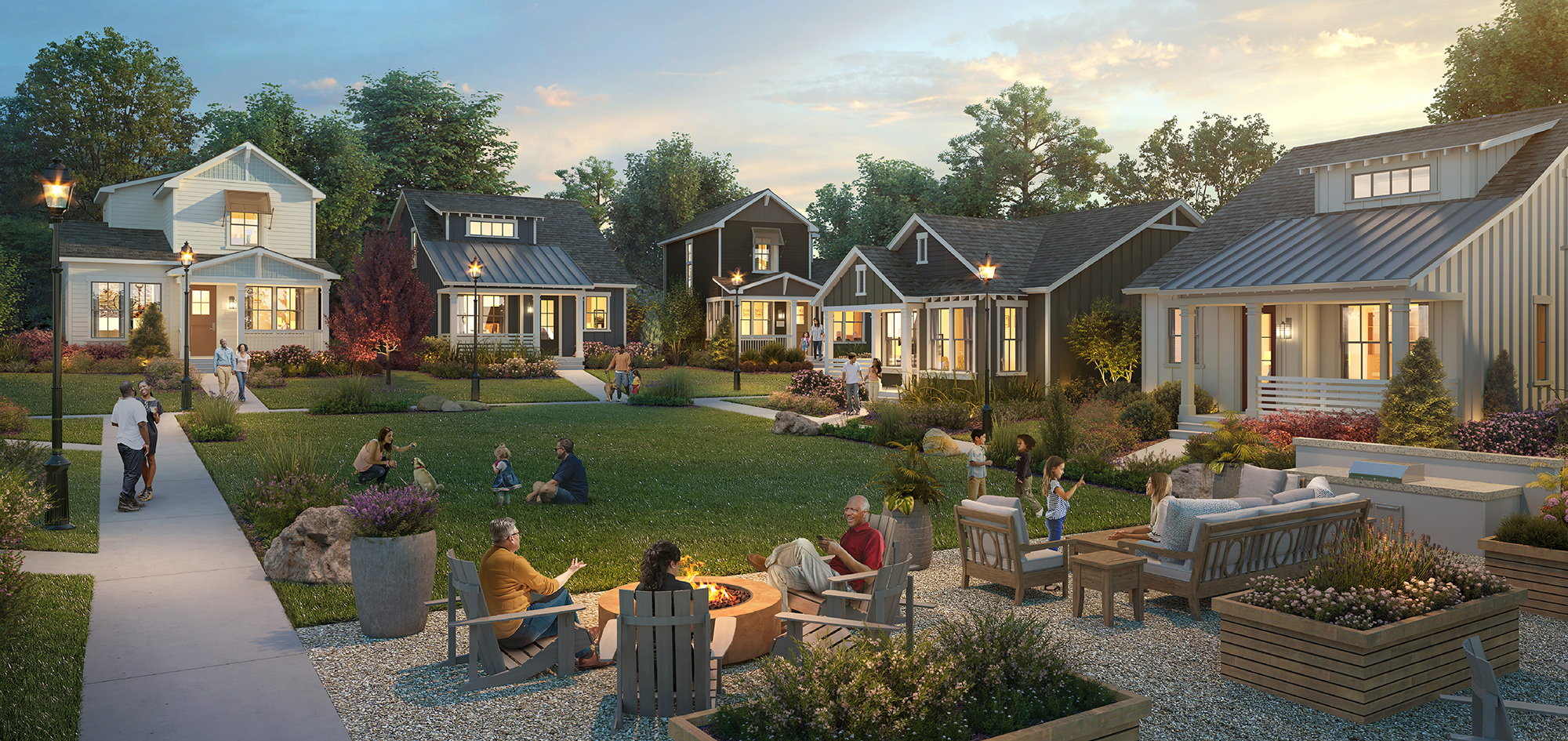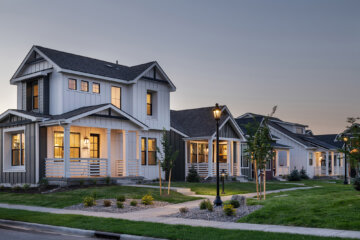Build-to-rent neighborhoods have become an attractive solution that architects, builders, and developers can use to introduce greater market segmentation.
 Families lounge in front of their houses in a communal-like setting.
Families lounge in front of their houses in a communal-like setting.
Some people think of renting as a temporary condition, but communities large and small are turning to build-to-rent as a valuable, long-term solution that can meet rising demand for housing.
Economic and demographic trends mean fewer young people expect to own their own homes, compared with earlier generations, and some who do are putting it off until later in life. Many among the younger generation are choosing to stay in the rental market even as their incomes trend upward. This growing segment is looking to start families, or move into the next phase of their lives, but prohibitive cost and risk make ownership unappealing.
Build-to-rent neighborhoods have become an attractive solution that architects, builders, and developers can use to introduce greater market segmentation.
Units offering the single-family lifestyle are quickly gaining popularity among people choosing to rent. These residents want a different standard of living that offers more privacy, individual backyards, pet-friendly features, extra storage, secure parking, and an easier move-in/out process. Private home features are more important to this kind of resident than title and deed.
Build-to-rent, however, does suffer from stereotypes.
Some build-to-rent communities retain too much of their for-rent aesthetic. KTGY is working on more than 50 active build-to-rent communities across the country that attempt to break the mold and beat stereotypes. We design our neighborhoods to look and feel like a for-sale neighborhood using greater architectural articulation, siding, attached one-car garages, welcoming front porches, and pushing front doors to streets, parks, and paseos. In certain markets, build-to-rent is becoming necessary to create options for individuals, couples, and families who need or choose to rent long term.
Build-to-rent communities are in ever-growing and evolving demand for successful master-planned communities across the United States. We are integrating build-to-rent in ways that encourage cohesive, social-focused, and multigenerational communities to flourish. A variety of for-rent product types, such as cottages (horizontal apartments), SFDs (small, medium, and large lot), paired homes (duplexes), triplexes, townhomes, and clusters are working their way into communities in new ways.
We work with clients assembling individual single-family detached lots to build clusters, streets, and small neighborhoods of build-to-rent homes in established neighborhoods. We are also doing small-scale master-planned communities of roughly 100 acres with six to seven different for-rent product types. At Blackwood Groves in Bozeman, Montana, for example, we are designing and building 60 for-rent cottages directly across the street from market-rate single-family detached homes. No fences, walls, or gates separate the product types, promoting a seamless and inclusive community.
By integrating a variety of for-sale and for-rent options without walls and gates, neighbors will naturally develop an attachment to a diverse neighborhood. A well-planned community leverages a variety of housing options, amenities, and natural features into an environment that drives resident interaction and results in a successful investment for residents and builders alike. The communities we want to build allow a mix of product types, unit square footages, densities, and price points that make natural entry and exit points for residents in different phases of life.
With current U.S. market conditions, many clients are pushing through design and construction drawings without a decision on whether the community will be for-sale or for-rent. Thus, we’re moving forward with design that allows for either direction as conditions develop. Our build-to-rent work strives to push the limits and create the best communities possible in the face of changing economic and demographic circumstances.

